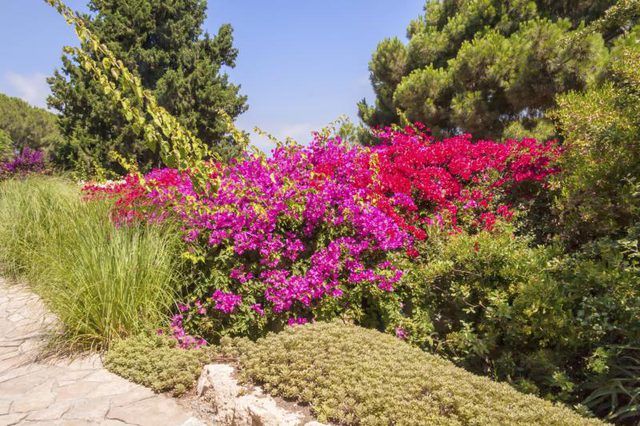Bulbs
Flower Basics
Flower Beds & Specialty Gardens
Flower Garden
Garden Furniture
Garden Gnomes
Garden Seeds
Garden Sheds
Garden Statues
Garden Tools & Supplies
Gardening Basics
Green & Organic
Groundcovers & Vines
Growing Annuals
Growing Basil
Growing Beans
Growing Berries
Growing Blueberries
Growing Cactus
Growing Corn
Growing Cotton
Growing Edibles
Growing Flowers
Growing Garlic
Growing Grapes
Growing Grass
Growing Herbs
Growing Jasmine
Growing Mint
Growing Mushrooms
Orchids
Growing Peanuts
Growing Perennials
Growing Plants
Growing Rosemary
Growing Roses
Growing Strawberries
Growing Sunflowers
Growing Thyme
Growing Tomatoes
Growing Tulips
Growing Vegetables
Herb Basics
Herb Garden
Indoor Growing
Landscaping Basics
Landscaping Patios
Landscaping Plants
Landscaping Shrubs
Landscaping Trees
Landscaping Walks & Pathways
Lawn Basics
Lawn Maintenance
Lawn Mowers
Lawn Ornaments
Lawn Planting
Lawn Tools
Outdoor Growing
Overall Landscape Planning
Pests, Weeds & Problems
Plant Basics
Rock Garden
Rose Garden
Shrubs
Soil
Specialty Gardens
Trees
Vegetable Garden
Yard Maintenance
How to Plant Bougainvillea
How to Plant Bougainvillea. Showy, brilliant floral displays of heat-loving bougainvillea (Bougainvillea spp.) make it a frequently used plant in subtropical and tropical areas. Hardy in U.S. Department of Agriculture plant hardiness zones 10 through 11, plants can freeze back but usually survive in zone 9. Needing full sun, bougainvillea is tough...

Showy, brilliant floral displays of heat-loving bougainvillea (Bougainvillea spp.) make it a frequently used plant in subtropical and tropical areas. Hardy in U.S. Department of Agriculture plant hardiness zones 10 through 11, plants can freeze back but usually survive in zone 9. Needing full sun, bougainvillea is tough and drought-resistant once it's established. Be careful not to damage the root systems during planting. The fine roots don't hold soil together well.
Choosing a Bougainvillea
Bougainvillea is usually added to the garden by planting a 1-gallon-size rooted cutting. Plants are normally propagated by cutting to get an exact replica of the particular hybrid or cultivar. There are many varieties with different bract colors and growth habits. For instance, "Barbara Karst" has brilliant magenta red bracts and spiny, vining growth to 20 or 30 feet long. It needs support to climb against. For a different aspect, consider "Torch Glow" bougainvillea, with erect growth to 6 or 8 feet tall and 3 feet wide. No support is needed. Bracts are reddish-pink at branch ends. In bougainvillea, the apparent flowers are really modified, papery, petal-like bracts that hold the small, true, white tubular flower at its base. The best time to plant a bougainvillea is in early summer.
Bougainvillea Planting Hole
Once you've chosen the bougainvillea to suit your landscape needs, dig a hole in a sunny, open location that's twice the width of the plant's container and the same depth as the container. University of California Master Gardeners recommend loosening the soil at the bottom of the planting hole and digging in amendments. For a 1-gallon size bougainvillea, dig in 1 cup each of bonemeal and gypsum and a slow-release fertilizer such as 1 1/4 tablespoons of 15-9-12. Check to make sure the hole depth will bring the plant's crown, or the growing point at which the branches emerge from the soil, level with the top of the hole.
Transferring From the Container
With the bougainvillea still in its container, put the plant in the hole and insert a pair of needle-nosed pliers into one of the drainage holes. Cut around the bottom of the container, turning the pot as you go. When the bottom is cut loose, slide it out from under the pot and discard it. Then cut down the length of the container from top to bottom in several places, lifting the cut sections gently away so the soil around the roots doesn't crumble. Then fill in with dirt from the planting hole, firming it around the root ball as you go to eliminate air pockets.
Watering Bougainvillea
With dirt from elsewhere in the garden, build a watering basin around the outside of the planting hole. Water the newly planted bougainvillea thoroughly. Keep the bougainvillea well-watered to begin with, as much as two or three times a week in light soils and summer weather. After a month, water the plant once a week until it's established, which may take up to three years. In heavier clay soils, water less. Don't let the soil become soggy. After the plant is well-established, water only when the ground is dry. For established plants, withhold water in summer beginning around July to promote flowering.
Fertilizer Requirements
Bougainvillea doesn't need much fertilizer, and too much nitrogen negatively affects flowering. Fertilize plants lightly in spring and summer with a formulation such as 10-4-12 hibiscus food at the rate of 0.4 pound per 10 square feet. Water the plant thoroughly, evenly scatter the fertilizer in a circle under the branches, dig it in and water again.